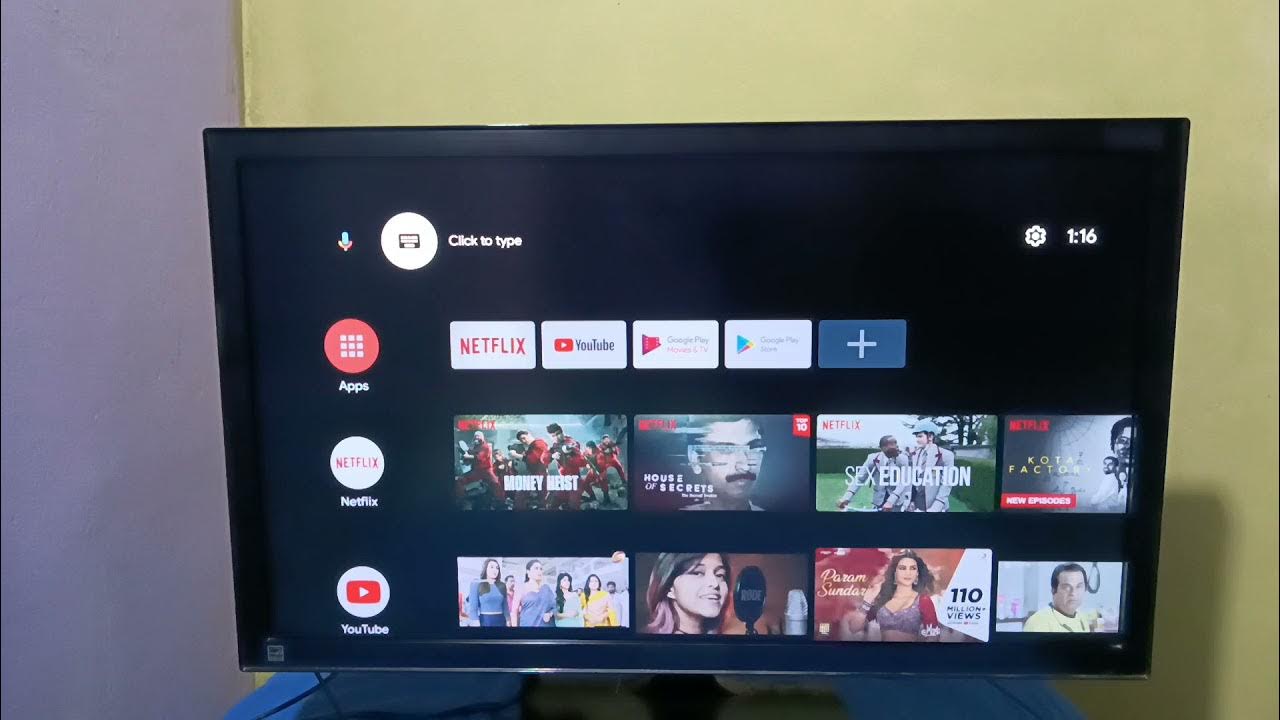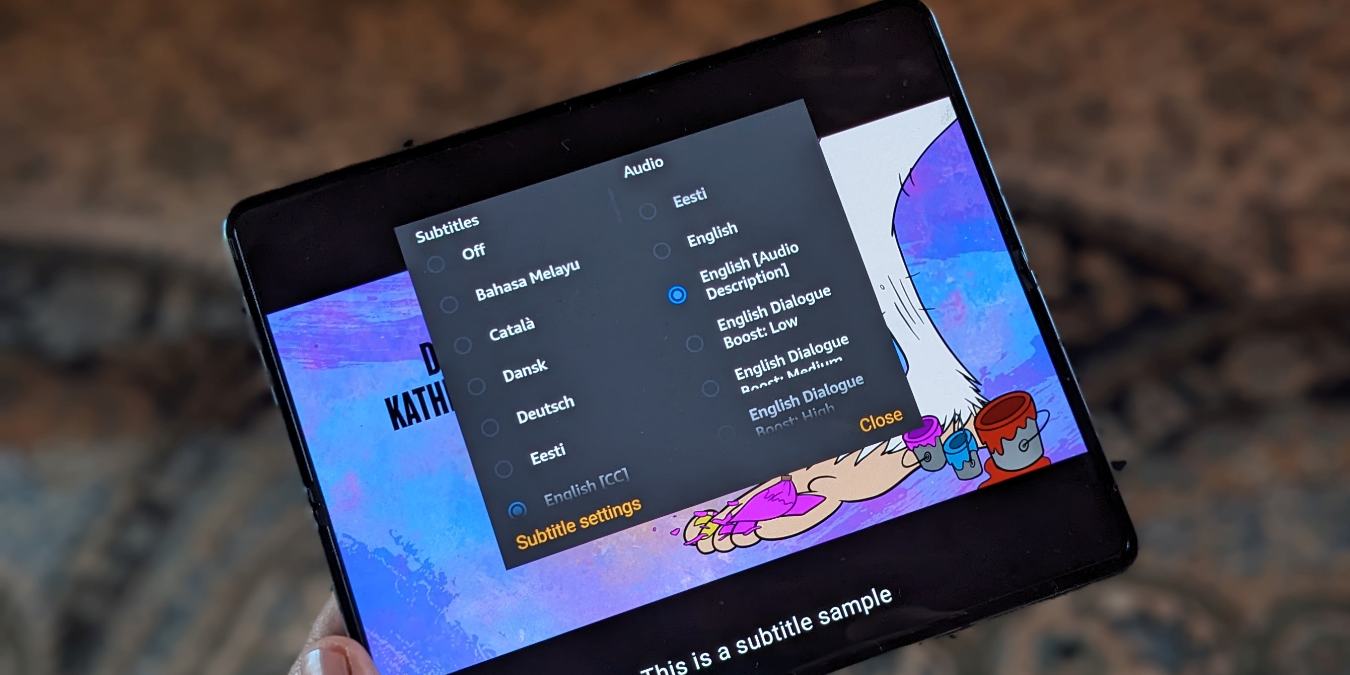Introduction
Welcome to our guide on how to disable commentary on an LED TV. LED TVs are a popular choice among households due to their sleek design, vibrant display, and energy efficiency. However, one feature that can be a bit bothersome for some viewers is the built-in commentary that accompanies certain programs or channels. This commentary, also known as audio description or descriptive video service (DVS), provides additional narration for visually impaired individuals, describing the on-screen actions and settings.
While this feature is invaluable for those who need it, it may not be necessary or desirable for everyone. If you find the commentary to be distracting or if you simply prefer to watch your favorite shows and movies without any additional audio, you’ll be pleased to know that disabling the commentary is a straightforward process.
In this guide, we’ll explore various methods to disable commentary on your LED TV, catering to different TV models and brands. Whether you have an LG, Samsung, Sony, or any other brand of LED TV, you’ll find a solution that suits your needs.
We’ll cover a range of methods, including using the TV menu, remote control, settings app, and even TV manufacturer’s apps. Additionally, we’ll provide some troubleshooting tips in case you encounter any difficulties along the way.
So, if you’re ready to learn how to disable commentary on your LED TV and regain control over your audio experience, let’s dive right in and explore the different methods you can use!
Note: The steps described in this guide may vary slightly depending on your specific TV model and firmware version. However, the overall process should be similar across most LED TVs.
What is LED TV Commentary?
LED TV commentary, also known as audio description or descriptive video service (DVS), is an accessibility feature available on many LED TVs. It provides additional audio narration that describes the visual elements of a program or movie for individuals with visual impairments.
This feature is particularly helpful for those who are blind or have low vision, as it allows them to follow along with the on-screen action and understand the visual details that sighted individuals may take for granted. The commentary typically describes not only the dialogue spoken by the characters but also the setting, actions, gestures, facial expressions, and other visual cues that enhance the viewing experience.
LED TV commentary is aimed at making television more inclusive and accessible for everyone. It enables individuals with visual impairments to enjoy a wider range of content and better understand the context of the program or movie being watched.
Many popular TV shows, movies, and streaming platforms offer content with built-in commentary options. These options are often easily accessible through the TV’s audio settings or the program itself. Some broadcasters even provide a separate audio track specifically dedicated to commentary.
It’s worth noting that LED TV commentary is not to be confused with closed captioning or subtitles. Closed captioning provides text-based transcriptions of the audio elements of a program, including dialogue, background sounds, and music. Subtitles, on the other hand, display a translated version of the dialogue in a different language.
LED TV commentary adds an extra layer of information, providing detailed descriptions of the visual aspects of a program or movie. It aims to create a more immersive viewing experience for individuals with visual impairments by allowing them to visualize the action happening on screen.
While this feature is incredibly valuable for those who need it, some viewers may find the commentary distracting or unnecessary. If you fall into this category or simply prefer to watch content without any additional audio, you can easily disable the LED TV commentary using one of the methods described in this guide.
Why Disable LED TV Commentary?
While LED TV commentary is a beneficial feature for individuals with visual impairments, there are various reasons why you might want to disable it. Here are a few of the most common reasons:
1. Preference: Some viewers simply prefer to watch TV shows and movies without any additional audio narration. They find it more enjoyable to rely solely on the dialogue, music, and sound effects to interpret the on-screen action. Disabling LED TV commentary allows them to personalize their viewing experience according to their preferences.
2. Distraction: For individuals who don’t require commentary, the additional audio narration can be distracting and take away from the immersive experience of watching a program or movie. It may disrupt the natural flow of the dialogue and reduce the overall enjoyment of the content.
3. Language Barrier: LED TV commentary is typically available in the language of the program or movie, which may not be the viewer’s preferred language. If the commentary is not in a language that the viewer understands, it can be confusing and cause difficulty in following the plot or understanding the context. Disabling the commentary eliminates this language barrier.
4. Faster Viewing: Some viewers prefer to watch content at a faster pace, such as speeding up TV shows or movies. However, LED TV commentary is usually synced with the standard playback speed, making it challenging to comprehend the additional audio at higher playback speeds. Disabling the commentary allows for a smoother and faster viewing experience.
5. Accessibility Issues: While LED TV commentary is designed to enhance accessibility for those with visual impairments, it may not be suitable for everyone. Some individuals may have difficulty processing both the audio description and the regular audio simultaneously, leading to sensory overload. By disabling the commentary, these individuals can enjoy the content without any additional auditory distractions.
6. Specific Content Types: Certain types of content, such as sports events or live broadcasts, may not benefit significantly from LED TV commentary. The additional narration may interfere with the excitement and real-time action of these types of programs. Disabling the commentary for specific content types allows for a more immersive experience.
Keep in mind that disabling LED TV commentary is a personal choice. If you or someone in your household does not require or prefer it, the methods outlined in this guide will help you easily turn off the commentary feature and enjoy your favorite shows and movies in the way that suits you best.
Method 1: Using the TV Menu
The TV menu is often the most straightforward method for disabling LED TV commentary. Here’s how you can do it:
- Turn on your LED TV and grab the TV remote control.
- Press the “Menu” button on the remote control. This will bring up the TV’s main menu on the screen.
- Navigate through the menu using the arrow keys on the remote control until you find the “Audio” or “Sound” option. The exact location of this option may vary depending on the TV brand and model.
- Select the “Audio” or “Sound” option by pressing the “OK” or “Enter” button on the remote control.
- Look for the “Audio Description,” “Descriptive Audio,” or a similar option within the “Audio” or “Sound” menu. This is where you can enable or disable the LED TV commentary.
- Toggle the option to disable the commentary. The toggle switch may be labeled “On/Off,” “Enabled/Disabled,” or represented by a checkbox where you can uncheck to disable the commentary.
- Once the LED TV commentary is disabled, press the “Exit” or “Menu” button on the remote control to exit the menu and return to watching your favorite shows without any additional audio narration.
If you encounter any difficulties or can’t locate the specific options mentioned above, refer to your TV’s user manual. The manual will provide detailed instructions on navigating the TV menu and disabling LED TV commentary for your particular model.
Remember that the menu layout and terminology may vary depending on your TV brand and model. If the above steps don’t exactly match your TV’s menu, look for similar options or consult the TV manufacturer’s support website for more detailed instructions.
By using the TV menu to disable LED TV commentary, you can easily customize your audio experience and enjoy your favorite content without any additional narration.
Method 2: Using the Remote Control
If your LED TV remote control has dedicated buttons or a quick-access menu, you can easily disable the commentary using these remote control functions. Here’s how:
- Ensure that your LED TV is turned on and grab the remote control.
- Look for a dedicated “Audio Description,” “DVS,” or “AD” button on your remote control. This button is designed specifically to toggle the LED TV commentary on or off.
- Press the “Audio Description” or “DVS” button. This will instantly disable the commentary if it was previously enabled. If the commentary is already disabled, pressing the button will enable it. Check the LED TV screen to confirm the change.
If your remote control doesn’t have a dedicated button, you can try accessing a quick-access menu that allows you to control audio settings. Here’s how:
- Press or look for a “Settings” or “Menu” button on your remote control. This will bring up the settings menu on the LED TV screen.
- Using the arrow keys or navigation buttons on your remote control, find the “Audio” or “Sound” option within the menu.
- Select the “Audio” or “Sound” option by pressing the “OK” or “Enter” button on the remote control.
- Look for the “Audio Description,” “Descriptive Audio,” or a similar option within the “Audio” or “Sound” menu.
- Toggle the option to disable the commentary. The toggle switch may be labeled “On/Off,” “Enabled/Disabled,” or represented by a checkbox where you can uncheck to disable the commentary.
- Once the LED TV commentary is disabled, press the “Exit” or “Menu” button on the remote control to exit the menu and return to watching your favorite shows without any additional audio narration.
If you’re having trouble locating the dedicated button or accessing the quick-access menu, refer to your LED TV’s user manual. The manual will provide specific instructions on using the remote control functions to disable the commentary for your particular TV model.
Using the remote control to disable LED TV commentary offers a convenient and straightforward method to personalize your audio experience and enjoy your content without any additional narration.
Method 3: Using the Settings App
If your LED TV has a settings app or an on-screen display (OSD) menu, you can use it to access the audio settings and disable the LED TV commentary. Here’s how:
- Turn on your LED TV and navigate to the home screen or main menu.
- Look for an app or option labeled “Settings” or “Setup.” This is typically represented by a gear icon.
- Select the “Settings” or “Setup” app by pressing the “OK” or “Enter” button on your remote control. This will open the settings menu on the LED TV screen.
- Using the arrow keys or navigation buttons on your remote control, find the “Audio” or “Sounds” option within the settings menu.
- Select the “Audio” or “Sounds” option by pressing the “OK” or “Enter” button on the remote control. This will open the audio settings menu.
- Look for the “Audio Description,” “Descriptive Audio,” or a similar option within the audio settings menu. This is where you can enable or disable the LED TV commentary.
- Toggle the option to disable the commentary. The toggle switch may be labeled “On/Off,” “Enabled/Disabled,” or represented by a checkbox where you can uncheck to disable the commentary.
- Once the LED TV commentary is disabled, navigate back to the home screen or exit the settings app to return to watching your favorite shows without any additional audio narration.
If your LED TV has a different menu layout or terminology, refer to the user manual or on-screen instructions for more precise steps on accessing the settings app and disabling the commentary.
Keep in mind that the availability and location of the settings app may vary depending on your TV brand and model. If you can’t locate the settings app or encounter any difficulties, consult the TV manufacturer’s support website or refer to the user manual for further guidance.
Utilizing the settings app on your LED TV allows for easy accessibility to the audio settings and provides a convenient method to disable the LED TV commentary according to your preferences.
Method 4: Using the TV Manufacturer’s App
If your LED TV supports a dedicated app provided by the manufacturer, you can use it to access advanced settings, including disabling the LED TV commentary. Here’s how:
- Make sure that your LED TV and your smartphone or tablet are connected to the same Wi-Fi network.
- On your smartphone or tablet, go to the app store relevant to your device’s operating system (such as Google Play Store for Android or App Store for iOS).
- Search for the official app provided by the manufacturer of your LED TV. For example, if you have a Samsung TV, search for the “Samsung TV” app.
- Download and install the app on your smartphone or tablet.
- Open the manufacturer’s app and follow the on-screen instructions to connect it to your LED TV. This typically involves entering a code or selecting your TV model from a list.
- Once connected, navigate through the app’s interface to find the “Settings” or “Audio” section.
- Look for the option related to “Audio Description” or “Descriptive Audio.” This is where you can enable or disable the LED TV commentary.
- Toggle the option to disable the commentary. The toggle switch may be labeled “On/Off” or “Enabled/Disabled.”
- Close the manufacturer’s app and return to watching content on your LED TV. The LED TV commentary will no longer be present.
Note that the functionalities and features available in the manufacturer’s app may vary depending on your TV brand and model. If you encounter any difficulties or can’t locate the specific option to disable the LED TV commentary within the app, consult the app’s documentation or support resources provided by the manufacturer for further guidance.
Using the TV manufacturer’s app offers a convenient way to access advanced settings and disable the LED TV commentary according to your preferences. It allows for greater control over your audio experience and ensures a more personalized viewing environment.
Tips for Troubleshooting
While disabling LED TV commentary should be a straightforward process, you may encounter some challenges or unexpected issues. Here are a few tips to help troubleshoot common problems:
1. Check for Updated Firmware: Ensure that your LED TV has the latest firmware installed. Manufacturers often release firmware updates to address bugs and improve functionality. Check the manufacturer’s website or the TV’s settings menu for firmware update instructions.
2. Reset the TV: If you’re experiencing issues with the audio settings or the LED TV commentary, a simple reset might resolve the problem. Refer to your TV’s user manual or the manufacturer’s support website for instructions on performing a factory reset.
3. Verify the Program’s Audio Settings: Sometimes, the LED TV commentary may be enabled at the program level rather than within the TV settings. Check the audio settings within the specific program or streaming service you’re using to ensure the commentary is disabled.
4. Double-Check the Audio Description Option: Depending on your TV brand and model, the option to disable LED TV commentary may have a different label or be located within a different menu. Take a close look at the audio settings menu and explore all the submenus to make sure you haven’t missed the commentary option.
5. Consult the User Manual: If you’re unsure about any settings or steps mentioned in this guide, refer to your LED TV’s user manual. The manual will provide specific instructions and information tailored to your TV model, helping you troubleshoot any issues.
6. Contact the Manufacturer’s Support: If you’ve tried the above tips and are still struggling to disable the LED TV commentary, don’t hesitate to reach out to the manufacturer’s customer support. They can provide specific guidance for your TV model and assist you in resolving any technical difficulties you may be facing.
Remember, patience is key when troubleshooting. Take your time to explore the settings options and refer to the resources available to you. With a bit of troubleshooting effort, you should be able to successfully disable the LED TV commentary and enjoy your favorite shows and movies without any additional audio narration.
Conclusion
Disabling LED TV commentary is a simple and effective way to tailor your audio experience and watch your favorite shows and movies without additional narration. Whether you have an LG, Samsung, Sony, or any other brand of LED TV, there are various methods you can use to disable the commentary and enjoy a personalized viewing experience.
In this guide, we explored four different methods to disable LED TV commentary. You can use the TV menu, remote control, settings app, or even the TV manufacturer’s app to access the audio settings and toggle off the commentary feature. Each method offers its own unique benefits and convenience, so you can choose the option that suits your needs and preferences.
Remember to consult your LED TV’s user manual or the manufacturer’s support resources if you encounter any difficulties or need specific instructions for your TV model. Additionally, it’s essential to keep your TV’s firmware updated and double-check the audio settings within specific programs or streaming services to ensure the LED TV commentary remains disabled.
By following the steps outlined in this guide and troubleshooting any issues that may arise, you can easily disable LED TV commentary and create a more immersive viewing experience that aligns with your preferences.
So, go ahead and take control over your audio experience. Enjoy your favorite shows and movies on your LED TV without any additional audio narration, just the way you like it!

























